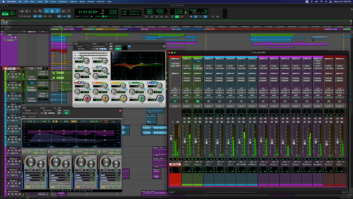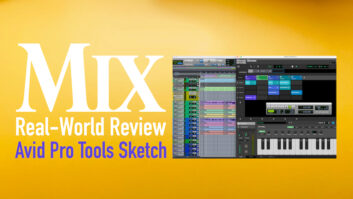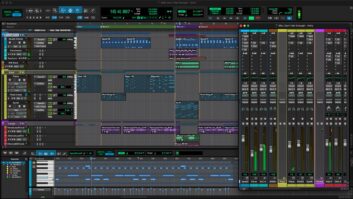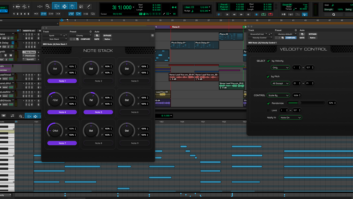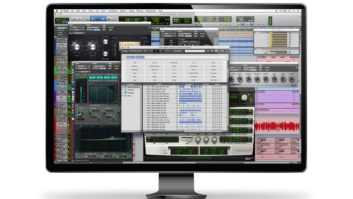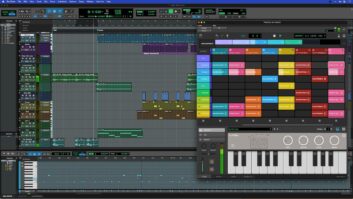NEW YORK, NY—As in San Francisco, a year earlier, Avid garnered significant attention at the 131st AES Convention with the launch of the latest version of Pro Tools software, this year also unveiling a new hardware engine for the flagship systems of the ubiquitous DAW. While the Pro Tools 10 software engine features some 50 new features, many of which will improve productivity for Pro Tools users, much of the conversation around the release focused on what Pro Tools 10 reveals about the future of the system.
The new Pro Tools HDX PCIe-based processor card is designed to replace the Pro Tools HD Accel series. The HDX DSP engine takes advantage of advances in DSP processing to reportedly offer five times the processing power of the HD Accel core, offering advantages in speed and track counts. Significantly, the HDX cards utilize 32-bit, floating-point processors (64-bit mixer depth)—a first for hardware-based Pro Tools systems. HD Accel and previous hardware from Avid utilized fixed-point, 24-bit DSP with an internal mix engine depth of 48 bits.
HDX puts Avid’s DSP-based systems in line with the structure of other leading DSP platforms and native processing. Using floating-point processing means that it will be virtually impossible to clip mixes internal to the system (the vaunted 1,000 dB of headroom). It also means that Avid had to rewrite the central code of Pro Tools to accommodate the paradigm shift—a major undertaking. Avid is touting 32-bit, floating-point processing as providing higher resolution and sonic advantages, an about-face from the company’s previous steadfast support of its fixed-point approach.
With Pro Tools 10, Avid has introduced a new plug-in format, AAX. Previously, Pro Tools utilized the RTAS plug-in protocol for native processing (floating-point), and hardware-based Pro Tools|HD systems utilized the TDM format (24-bit fixed). With AAX, plug-ins can utilize a more similar code base for either DSP or Native processing. Though AAX DSP development is said to still be more extensive than AAX Native, plug-in development should be easier for Avid and its third-party partners. TDM plug-ins have been significantly more expensive in the past, as the extensive coding was supported by a smaller user-base. End-users are speculating as to what AAX will mean for future plug-in pricing, with Sonnox providing one manufacturer’s answer—a 30 percent price reduction on its TDM plug-ins that is being matched on its AAX DSP versions.
Upgrade and cross-grade schemes are available for Pro Tools customers who want to make the transition to Pro Tools 10 and HDX. Early user comments suggest that speed and productivity enhancements available from a software-only upgrade make Pro Tools 10 welcome, while the checkbooks of Pro Tools HD power users are being scrutinized to determine how and when to make the leap to HDX to take full advantage of the potential of the platform.
Avid
avid.com
